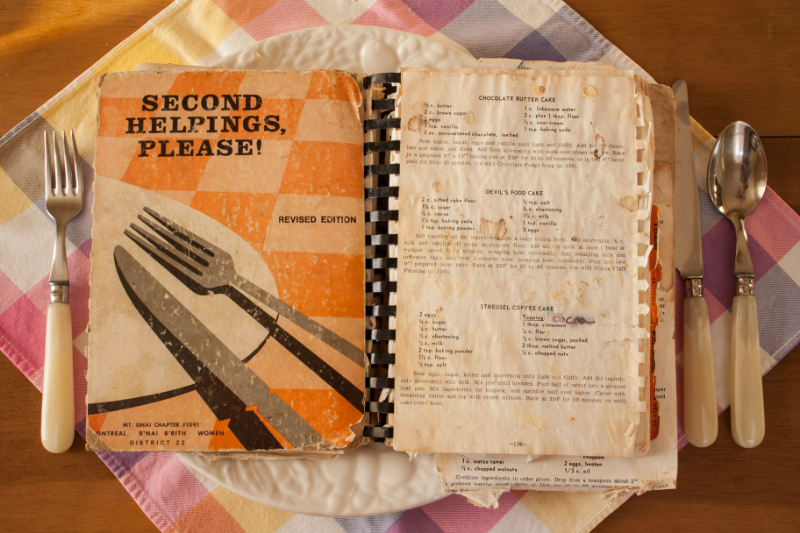Norene Gilletz’s Second Helpings, Please! was the ketubbah of cookbooks for every Jewish bride setting up a kitchen. Who could get married without a copy?
Is there a Jewish woman from one end of the country to the other who doesn’t own a copy of this cooking classic, which launched editor Gilletz, who died on Feb. 23 in Montreal, into the league of culinary stars.
From recipes for “mock gefilte fish” and “sweet and sour meatballs #1 (and #2!)” to “never- fail sponge cake,” Second Helpings functioned as both guide for the culinary perplexed and learned text for the seasoned cook.
Initially a fundraiser for B’nai Brith Women, Second Helpings hit it out of the ballpark with its first edition in 1968, and has since racked up another 17 printings. While the design has evolved from its earliest spiral-bound incarnation, this is a cookbook that was in the right place at the right time.
For the boomer generation of women marrying in the 1970s and ‘80s, our placards for equality were now sharing space with pots and pans. Newlyweds were suddenly confronted with the prospect of preparing not only daily meals from scratch but Shabbat and holiday fare on a grander, more ambitious scale. We turned to Second Helpings for help.
Like talmudic students hunched over an ancient tractate, we women were “learning together” in the study hall of our kitchens. On Fridays especially, I would imagine (and still do) hundreds of us reaching for our copies of Second Helpings, swaying back and forth in our aprons flipping pages, pondering recipes, reciting ingredients and deciding between an apple or streusel coffee cake for dessert.
That’s my definition of a Jewish sisterhood moment.
Unable to recall if my copy was a gift or self-purchased, I do know Second Helpings was on my radar early on, when the family for whom I did babysitting as a teenager were fans of the lemon chicken for Friday night dinner.
Little did I imagine that just a few years later, I’d be thumbing through those same pages for ideas and inspiration for my own Shabbat table.
Sure, other Jewish cookbooks were available but Second Helpings was the one I returned to week after week. Mostly for the recipes, which often took me by the hand back to my bubbe’s kitchen, but also for the crash course in technique that began each chapter. Who knew that adding a little sugar to cold water helps carrots to crisp? Or egg whites whipped at room temperature punches up the volume? Or that greasing tube pans is a no-no for sponge or chiffon cakes? They didn’t teach me that in journalism school.
In the current overheated gastronomic climate, many dishes in Second Helpings seem so basic (does anyone still eat chopped herring?) But to a culinary novice in the 1970s, when quiche and fondue were the height of sophisticated eating, Gilletz elevated our cooking savoir-faire with “Green Beans and Onions Almondine,” “Daube Provincial” and “Vichyssoise,” while honouring our heritage with batampte recipes for cabbage rolls, blintzes and cheese bagels. To this day, Second Helpings’ challah and mock gefilte fish enjoy the longest run of any recipes in my kitchen.
My dog-eared copy of Second Helpings (Revised Edition) is showing its age: recipes are marked up or splotched with cake batter; the black vinyl binding has finally, after 43 years, loosened its grip on the cover; and, numerous torn pages are hanging on for dear life with brittle Scotch tape. Page 79 with the tuna casserole recipe is only slightly stained, a sentimental reminder of my husband’s earliest attempt at a surprise dinner after my shift at work ran late.
But the wear and tear on this cookbook is testament to the staying power of food prepared without fuss, that relies on tradition to deliver taste. And the joy of it all is that Second Helpings works without the need for high-tech appliances, or an artist’s eye to choreograph a plate of vegetables or ice a cake.
To that end, those of us who got our culinary stripes from Second Helpings are forever grateful to Norene Gilletz, for giving us confidence at the stove top and showing us the way.
